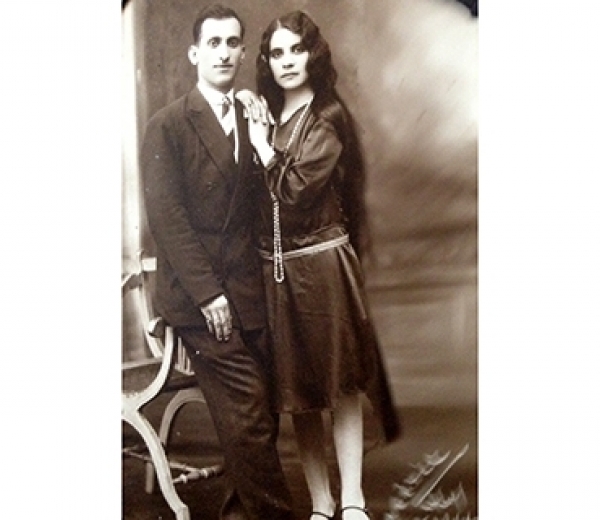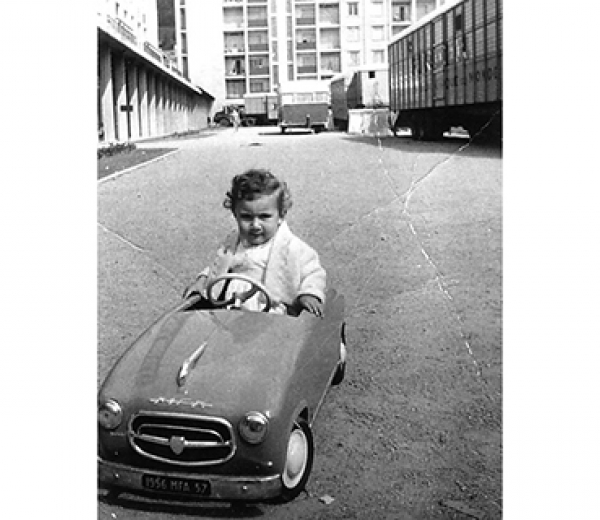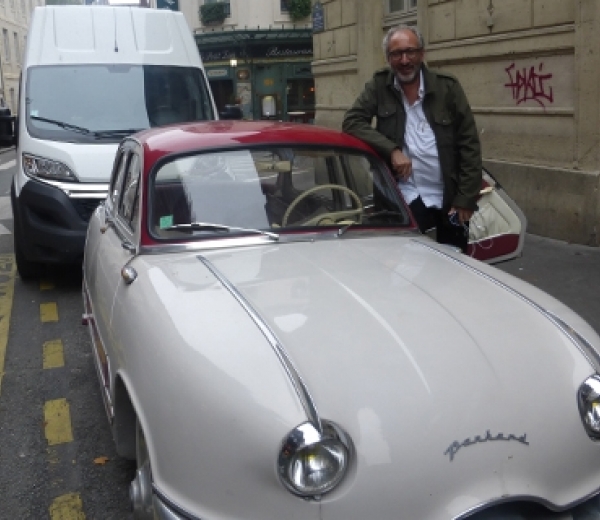Alain Mikli
Submitted by global publisher on Mon, 11/23/2015 - 14:25
English
Intro:
Across the globe, Alain Mikli’s name is inevitably associated with designer eyeglasses. His prestigious brand is a quality standard in the eyewear industry. Already a leading innovator in the luxury market, Mikli doesn’t plan to rest on the laurels. With entrepreneurship in his blood, he has moved on to developing a number of other businesses.
Weight:
-1 500
Story elements:
Text:
Across the globe, Alain Mikli’s name is inevitably associated with designer eyeglasses. His prestigious brand is a quality standard in the eyewear industry. Already a leading innovator in the luxury market, Mikli doesn’t plan to rest on the laurels. With entrepreneurship in his blood, he has moved on to developing a number of other businesses.
Text:
The word “impossible” doesn’t exist for Alain Mikli (Miklitarian). “In addition, it doesn’t sound very Armenian,’’ he says with irony in his voice. For Mikli, being an Armenian means being resourceful. Since he sold his eyewear brand in January of 2013, he has set up eight new companies and ventured into the food industry.
Divine providence and a French aunt
As is often the case with brilliant success stories, Alain’s mother never really cut the umbilical cord. For decades, she has played an active role in his life and participated in the expansion of the family enterprise. Lucie Miklitarian was born in 1931 in Grenoble, but she has only vague memories of her early years there. “I remember going to Armenian school,” says Lucie. “At that time I spoke Armenian, Greek and Turkish, but today I can’t remember any of those languages.”
Lucie remembers her father, Ohanès Haladjian, a native of Marash in Cilicia (present-day Kahramanmarash in southern Turkey). “My father’s family was very wealthy,” she says. “They owned vast properties and had 20 workers.” Born before the Genocide, her father was ten years old in 1915. He witnessed the unspeakable: his parents' throats were slit “like sheep’s.”
“My father escaped with his two little sisters and they fled to Syria,’’ Lucie recalls. “In Aleppo, the three of them wandered through the streets, weak with hunger. One day, a Syrian woman asked him where his parents were. She took the two little girls, and my father never saw them again. Never again!” she exclaims.
Ohanès was saved by Armenian priests, who picked him up on their way to Jerusalem. The little boy spent his childhood and adolescence at the seminary, where they prepared him for priesthood. One day, the chief priest decided to send him to the United States, to begin his ministry there. On his way to America, Ohanès stopped in France to bid farewell to one of his aunts, who was the only other survivor of the family.
She spoke strongly against his plan to go to America. “So long as I live, you’ll never leave France!” the aunt told him. “You’re the only man in the family; we’ll find you a girl; you’ll marry and stay in France.”
Thus, Alain’s maternal grandfather settled down in France. He married Santouhte Aharonian, a beautiful young woman who also escaped the Genocide. The couple had five children: Lucie, the eldest, Joseph, Pierre, Azad and Siranouch.
Image:

Text:
|
Alain Mikli’s maternal grandparents Ohanès Haladjian and Santouhte Aharonian |
“My father worked day and night at a silk factory in Grenoble,” Lucie remembers. “We lived in a workers’ town, and he often repeated: ‘If only the Turks returned the land they stole from my parents, I’d be a millionaire today!’ Yet, despite these thoughts, he was a saintly man who never complained.” During World War II and the hardships of German occupation, Lucie struggled to stay in school. “Each time the German troops advanced, we changed schools to remain in the free zone. I never officially graduated, I went to work very early.”
Lucie’s first job was working in a biscuit factory in Grenoble. They called her “little arms,” she recalls with a smile. But her parents soon sent her to an Armenian woman in the city to learn to be a seamstress.
By the age of 20, Lucie was besieged by men asking for her hand in marriage. One suitor, Vartkes Miklitarian, was particularly insistent. Vartkes was from Smyrna (today Izmir in western Turkey), and a survivor of the fire set there by Turkish nationalists in 1922.
Lucie and Vartkes married in 1950 and left for Vienne, a small city in central France. They later moved to Sainte-Colombe near Lyon, where Alain was born in 1955. He remembers very little of his father, who fell gravely ill shortly after his birth and died in 1957.
Image:

Text:
|
Alain Mikli at the age of one |
Destiny calling
Alain was not yet 12 when he came to Paris. He found classes boring, and at the age of 16 he decided upon a trade. His goal was to find a school no more than ten minutes by foot from where he lived. A school that specialized in optical professions, the Lycée Fresnel, happened to be right near his apartment. “Back then, eyeglasses were considered nothing more than an ocular prosthesis, a medical object needed by those who were myopic,” Alain says.
He soon got the idea to design frames that would be both aesthetic and comfortable. In 1978, at the age of 23, he set up his own business designing eyewear models and manufacturing them under the brand name Mikli, his nickname since childhood. His goal was to bring eyeglasses into a new era, “in which the medical side was no longer at odds with designer style, and the prosthesis part disappeared behind a true jewel for the face,” he says.
He basically created the concept of designer eyewear.
Every year, close to 400 eyewear prototypes are produced in his workshop. Alain innovates as he breathes, and he quickly made a name for himself through his penchant for provocation. A determined and demanding worker, Alain creates one project after another, always aware of the exceptional ability of eyewear to reveal a personality and to dress the eyes, which are the mirror of the soul. His eyeglasses quickly became popular among celebrities. Jean Paul Gaultier has used them for his fashion models, and they are worn by famous American film stars, like Samuel L. Jackson.
Image:

Text:
|
Alain Mikli as a little boy |
Empowering the visually impaired
One day Alain’s longtime friend, the well-known photographer Yann Arthus-Bertrand, came to him with a wild idea. “He wanted to transform his photographic works of aerial views in such a way that a blind person could see them,” recalls Alain. “At first I thought it was a joke, but when he insisted on mounting an exhibition, we began to work together on the project.”
Later, during a trip to Armenia, Alain asked Yann to take aerial photos of Armenia in order to illustrate Levon’s latest album, and then to exhibit them at the Yerevan Modern Art Museum. The goal was to offer the blind and visually-impaired an experimental tour of tactile images that would allow a sharing of artistic perceptions and emotions. It was the first time anything of the sort had been done in Armenia.
Soon after, Alain repeated the project in the Centre Pompidou in Paris. “It’s extraordinary to give sight to the blind, and the adventure continues today with the Quai Branly museum,” Alain says enthusiastically.
Alain devotes a large amount of time to charitable projects. In the past he has cooperated with the Union of Armenian Doctors of France (UMAF) to help the visually-impaired. Contact lenses and eyeglasses were given to those in need because Alain believes that “In order to be integrated into society, people must be able to work and to read. Armenians are very good with their hands, and those who lose their sight lose their means of work.”
Image:

Text:
|
Alain Mikli |
Repaying old debts
Unlike many of his compatriots, Alain was not particularly affected by the “2015 syndrome.” He paid no special attention to the centennial of the Armenian Genocide. It was a year like any other for someone who is critical of what he believes to be Armenians’ fixation on the past and the Genocide’s painful memory. “I saw many reports on TV about the subject,” he says. “Now, we know there was a Genocide, but all that work does nothing to help our dead. It’s time to focus on the future and contribute something of value to future challenges. We can’t go on being satisfied making demands,” he believes.
“The existence of the Armenian people rests on their talent, and there are plenty of brilliant young Armenians all over the world, young people rich in heart and in ideas,” asserts Mikli, who feels more at home in Istanbul than in Yerevan.
“They make our ancestors shine another way. To me, their creativity is the best proof that the Turks didn’t manage to destroy us, and that they will never destroy us.”
As a child, Alain heard Turkish spoken more often than Armenian. Today, he has Turkish clients, and says to them, “Dear clients, I’m making you pay ten percent more, it’s your contribution' – and everyone understands what I mean and accepts it.” For Alain, that “blood tax” remains one of his most important victories. It doesn’t bother him to dress the eyes of certain Turks, who are proud to say that an Armenian made their eyeglasses.
Image:

Text:
|
Alain Mikli posing in front of his 1957 Panhard |
As a cautious optimist Alain realizes that “We’ve lived through so many ordeals that what we have today can only be positive.” And when asked about the nature of the driving force that pushes him to spend so much energy, he answers unequivocally, “the pleasure of life and sharing, sharing what's in one’s plate, like sharing a vision of the world and letting people get together. We all have a short time on Earth, and we should have the pleasure of knowing how to benefit from it.”
The story is verified by the 100 LIVES Research Team.
Header image by Vahan Stepanian.
Subtitle:
The father of eyewear design: “My Turkish clients pay ten percent more”
Story number:
187
Author:
Tigrane Yegavian
Header image:

